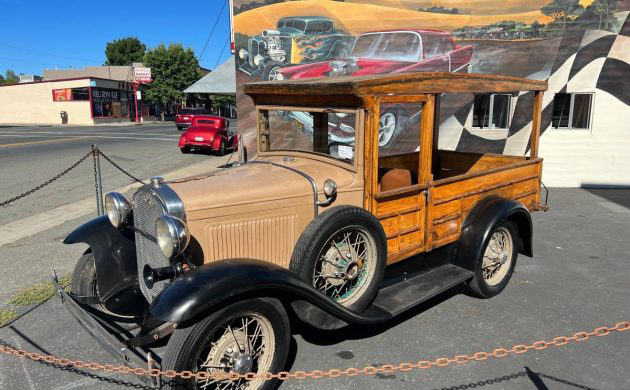
The business of delivering goods to the masses is ever-changing. Today we are going through a radical transformation of that process, where items are ordered online and picked up in a parking lot or delivered to your home by a delivery person. In some locales, merchants are working out the bugs of drone delivery. How were goods delivered back in the twenties and thirties? One way was by the use of a huckster, like this 1930 Model A Ford huckster for sale on Craigslist in Finley, California. This simple Model A truck with an open wooden body is representative of how goods such as produce were delivered to neighborhoods at a time when Sam Walton was just a boy. This interesting relic from our past is being offered at $15,000 and could still be the foundation of a business for an enterprising salesperson. Could that be you? Thanks to Lew C. for the interesting tip!
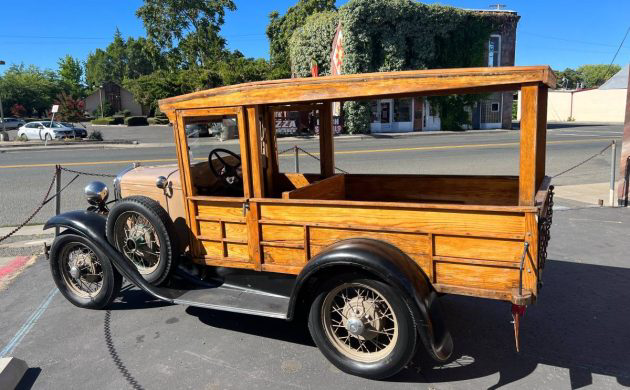
Let’s talk bananas. Specifically, bananas on a steamship headed to Philadelphia, Pennsylvania in late 1930. Those bananas would be offloaded into a warehouse at the port. From there, they would be loaded into railroad boxcars and shipped out by a train (most likely the fabled Pennsylvania Railroad). Up front, a steam locomotive would take them to a rail yard, where various boxcars cars would be sorted and sent to different destinations across America’s rail network. Let’s say that a banana-filled boxcar was headed to Pittsburg. Once it arrived at its destination, the cargo would be offloaded into a freight depot. Various vendors would send their trucks to pick up their allotted boxes of bananas, now turning slightly yellow.
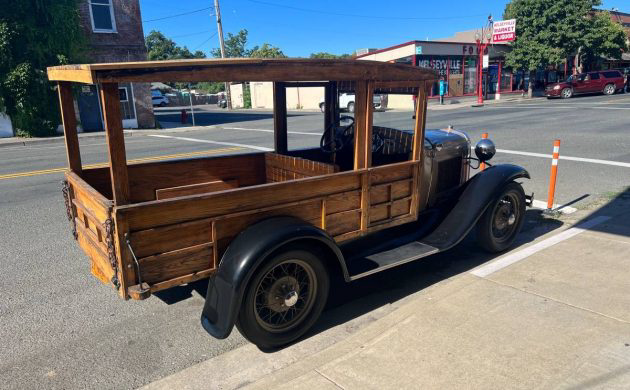
In many cities, those trucks would return to a warehouse or store with the goods. Once there, the bananas would become just one part of the produce and/or goods that were loaded in smaller trucks, called hucksters, that would then fan out into the neighborhoods that the business served and sell the items directly to consumers. While we do things much differently now and more efficiently, the network used back then to bring goods to consumers was very effective considering the machinery and transportation networks at the time. These hucksters were so common that most makers of small trucks carried these windowless wagons in their catalogs.
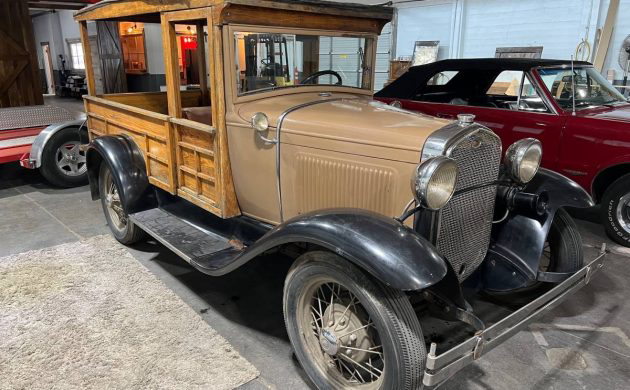
As the seller tells us in the ad, depot hacks and hucksters were very close in design and use. Ford offered both body styles, and they were covered wood bodies placed upon a Ford Model A cowl and front end. They were designed to get people and products from place to place. If inclement weather was a problem, the driver could unroll curtains to protect the bed area. Security wasn’t the issue it is today it seems. Trucks serving this purpose lasted well into the sixties in some areas, delivering items to neighborhoods that hadn’t yet experienced the car in every driveway phenomenon.

Due to their wooden bodies and the generally poor survival rate of commercial vehicles, hucksters are rarely seen today. This one, which is listed as a 1930 Ford in the title and as a 1929 Ford in the ad, is claimed to have its original inline four-cylinder engine and three-speed manual transmission. The seller tells us that it was restored 15 years ago and used for a display at a California vineyard.
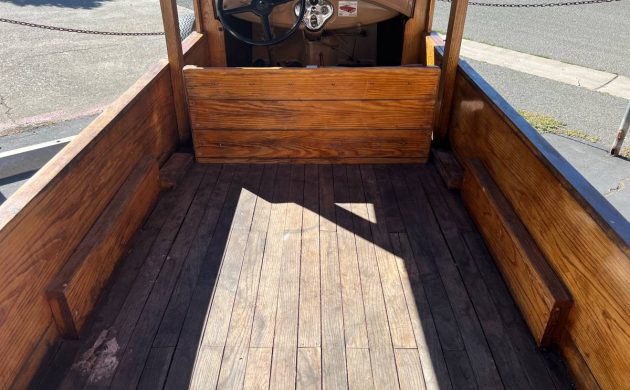
In the ad, the seller goes into detail about the condition of this Model A. We are told that the fenders are steel instead of the commonly seen fiberglass reproductions. They also state that the body shows patina and signs of wear and that there is no rust or damage. As for how it runs, the description states that it runs and drives like a Model A should. Driving it is also easier, as the seats are set back farther than those on the average Model A. The cramped fit of cars of this era is a common complaint, as there weren’t as many all-you-can-eat buffets and iced coffees available to folks back then.
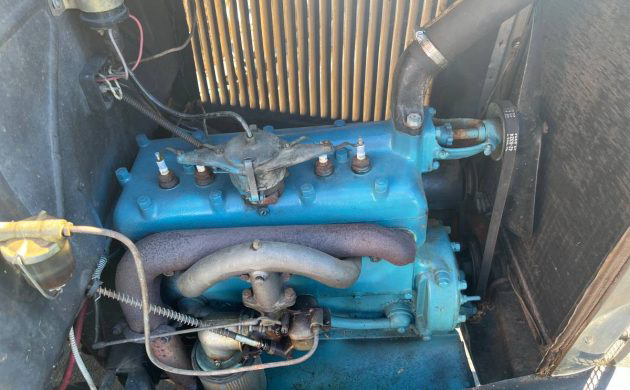
The seller also makes mention of using this truck as a business opportunity. With the rise of farmers markets and such, that might not be a bad idea for someone who is selling an image as much as their product. The purchase of this truck could be written off on one’s business taxes. It would most likely be just a prop for a business, as one has to deal in volume to bring prices to reasonable levels in today’s competitive market. You would probably be better off renting it out as a photo prop to people who want a taste of old-school life but still want their lattes and organic arugula at a reasonable price. Or you could purchase it to keep alive a little-known aspect of life back in our great grandparents’ time. A truck like this one has a great story to tell, and it is one that most people don’t know anything about.







There are quite a few museum pieces looking for new homes lately. This is a really nice copy here.
This is my dream truck.
Gotta love the name. Finally, truth in advertising.
Crew chief loves it but the only way it could get further away from us is if they took it to Hawaii. Have only seen a couple of these but this one is by far the best. Nice.
Was this body sold through the Ford network or is it aftermarket only?
Nice A.